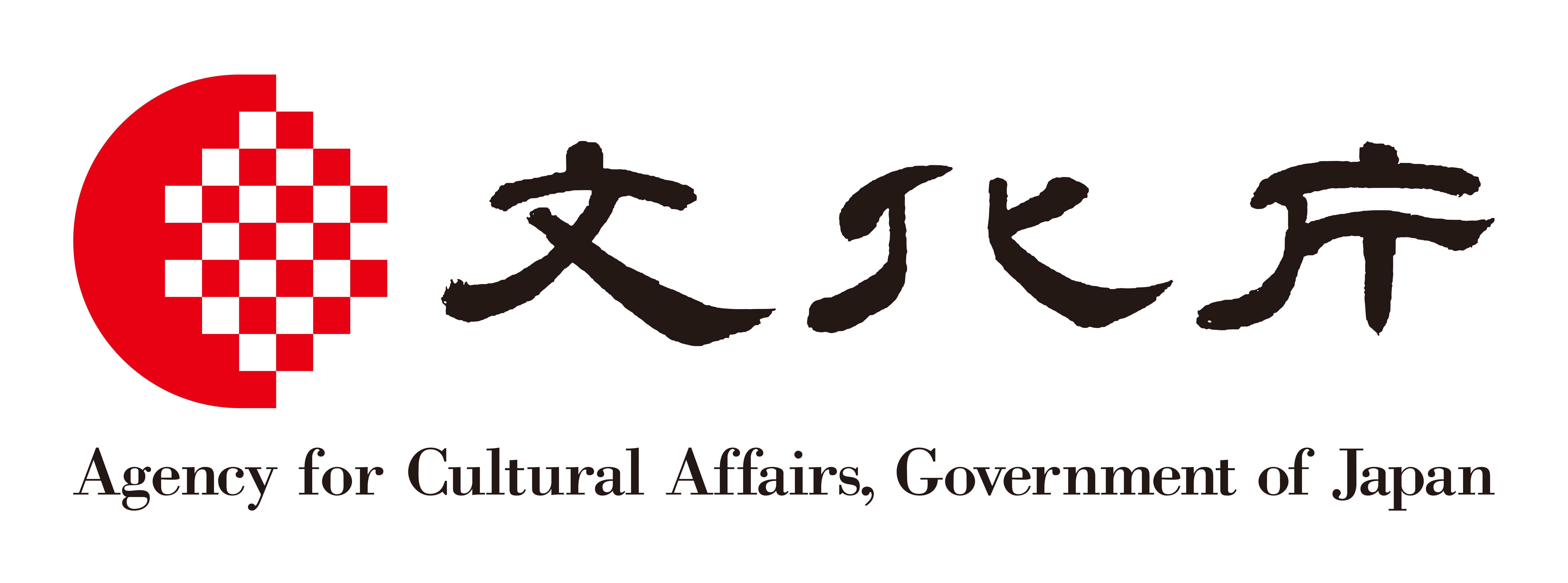



There are several theories as to the origin, and nothing is known for sure. Here we introduce some stories left with Saihoji temple, the successor and the sponsor of the Bonfire,and some statements in historical documents.
① In Jowa 14 (847)a high ranking priest Jikaku Taishi Ennin, the founder of Saihoji, was on a boat on his way back to Japan after studying in China. In a heavy storm, he took a piece of cloth ( or a piece of ship plank), wrote “南無阿弥陀仏” ( I pray for the peace of the world (four seas) in the name of Amitabha), and threw it into the sea with a prayer. Then at once the storm was gone and he came home safe and sound.
② In the year Enji10 ( 910) at the first Bon festival after a pandemic which brought tens of thousands deaths, this Funagata Bonfire was started,,interpreting the boat as everyone’s vehicle 乗 signifying 大乗仏教, Mahayana Buddhism(Tanaka Ryokko 1957).
③ Another theory says it symbolically imitates the Bon folk custom of Shoro Nagashi, where paper lantern or votive offerings are put on a straw or wooden boat and put on to the water to see off the ancestors’ sprits. In addition some scholars say that it also means “Gusei no Fune (Boat on which Bodhisattva leading the people to Nirvana) (Tanaka 1957, Iwata 1990)
There is no mentioning of Ennin’s episode concerning the sail boat in any record before Edo period.
In the historical records, the following statement is seen in the diary of Ozuki Tadatoshi (1600~1663), “Tadatoshi Sukune-ki”, dated July 16, Keian 2 (1649):

Went up to the hill gate and watched the torches of towns people.
Nishiyama Daimonji, Fune, Higashiyama Daimonji. All were beautiful.
This is considered to be the first written record of the period. Additionally pictograph “Rakuyo Meisho-shu” (Famous Tourist Sights of Kyoto) (1658) and a tourist guide “Annnaisha” (Guides) also record Daimonji, Fune, Hokakebune (sail boat). These records certify that Funagata Okuribi was well established by early Edo period.

Early on the morning of August 16, 18 youth and 36 middle-aged men of the Hozonkai carry the split pinewoods up to the hill and start preparation for the fire. The Funagata Bonfire is lit at the signal of a bell. This bell signal is recorded in the “Yamashu Meisekishi”(Historical Sights of Yamashu) and this sounding of the bell had long been done on a hill called “Kane-uchi Yama” (Bell sounding hill), though which hill this was is not clear. Now the bell sounding is done at a place 2~300 meters north west of Saihoji temple, where the fireplaces are in sight.
After the Bonfire Rokusai Nenbutsu (prayer to Amida Buddha) is done by the Hozonkai members.


Funagata Mantoro (Sail boat and votive lantern Bonfire) Hozonkai
Members:55 households
Out of the 55 households among old Nishi Kamo villages of 3 chos (Chinju Iori-cho, Imahara-cho, and Somon-cho) belonging to Saihoji temple, 18 youth (ages 17~30 years old) and 36 middle age men and some elderly men, about 50 in all, serve for the Bonfire event. The number of the youth group is limited to 18, and when a new member joins, the oldest leaves the group and joins the middle age group.



Formerly stakes were struck directly into the hillside, to which huge torches were leaned on to start the fire. In two years of Showa 56 and 57 (1981, 1982) a big innovation was done: concrete blocks were replaced by rock work; Ohya-ishi, strong, fire-proof stone was placed on a levelled ground.
Number of fireplaces: 79

Split pinewoods, piled up in 井 shapes are used.
500 bundles of split pinewoods and 130 bundles of pine-needles are used.

This dance is performed on the night of August 16, after the lighting of the Bonfire in the precincts of Saihoji by the believers of nenbutsu, the prayers to Amitabha. Unlike Nenbutsu Odori of other districts, this is simply repeated prayers without musical art elements.
Of the Hozonkai members, middle aged men without titles come down the hill after the lighting, leaving the care of the fire to the firemen. They change the clothes at home and gather in the precincts. Recently there are cases where one group engages in the fire, while another group prepares for the dance.
At Saihoji the drummers make a horseshoe shape with 3 Omotes in the center, who stand with the main hall on the back, with a drum in the left hand and a stick in the right. The “Doshi” (Leader) played by an elderly man and other bell people stand at the open part of the horseshoe shape, facing the main hall, with a stole and the bell hung around the neck.
The instruments are only these drums and bells. First the bell group chant the prayers, then a set of 4 music-like chants (each called “Ura Okoshi, “Ichinokake”, “Naka (Higashi) nokake”, “Naka (Nishi) nokake”). The last one “Shinbachi” brings back the chants by bell group. This whole set is called “Shinbachi”, which is said to have been performed several times a year. Now, however, it is done only on the Bonfire day.
Saihoji Rokusai Nenbutsu was nationally designated on January 11, Showa 58 (1983) as Important Intangible Folk Cultural Assets, together with 14 other Rokusai Nenbutsu in Kyoto.

Q: Can we climb the hill on that day?
A: No climbing is allowed throughout the year.
Q: Can we volunteer for the service?
A: No, we do not accept volunteers.
Q: How can we offer homa sticks?
A: They are accepted as follows:
August 3~15 (except 6th) 8 a.m.~4 p.m.
August 16 8 a.m.~10 a.m.till they are sold out.
Q: Can we see the Nenbutsu?
A: Yes, it is open to the public, though there may be cases where no observers are allowed in fear of pandemics etc.

本事業は,令和2年度文化芸術振興費補助金(地域文化財総合活用推進事業(地域無形文化遺産継承のための新しい生活様式支援事業))の助成を受けて令和3年度に実施する「コロナ禍における無形民俗文化財のための継承・保存・活性化事業」の一部です。
※当ホームページに掲載するすべての写真につきまして、転載・複製を禁止します。
Copyright © Kyoto Gozan Okuribi Rengoukai All Right Reserved.
















